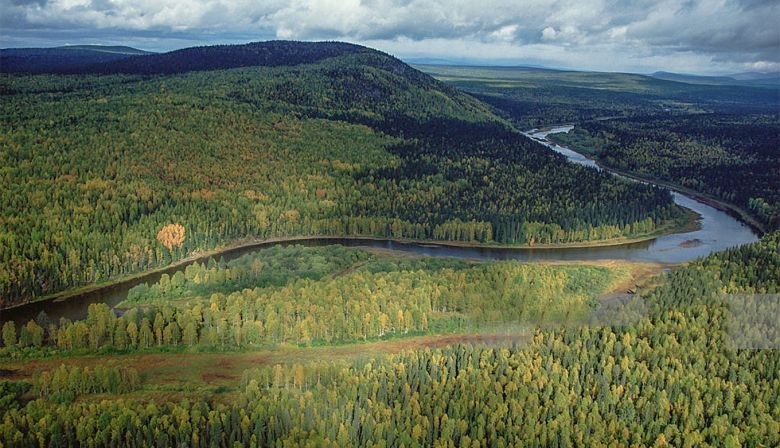
Subscribe & stay up-to-date with ASF

The 2020 season across the Atlantic is tracking like North America. Indications are that runs are up over last year, but river seekers have been interrupted by the pandemic. In fact, this has been a challenging year to get information from our usual sources.
Nonetheless, it seems more fish have survived their ocean migration than in recent years. Whether ocean conditions are improving, the Greenland Salmon Conservation Agreement is taking effect, or both, will take some analysis in the months ahead.
Now, here’s the latest from the other side of the Atlantic:

“The Norwegian Institute for Nature Research (NINA) sumarized the catches in all the Norwegian counties until the beginning of July.
“The general impression is that the salmon returns and catches are higher compared to the period from 2011-2014, and at the level or higher compared to the period 2015-2019 (2018 is not included in the stats due to an exceptional dry and warm summer).
“In Troms and Finnmark County, the 2020 catches are lower than in the mentioned periods.
“NINA also points out that the Finnmark rivers are “late” this year as they are in most years, and only a small portion of the catches are usually made before the beginning of July.
“In addition, a late and large snowmelt caused difficult fishing conditions in large parts of Finnmark, including River Alta. The catches in Finnmark vary a lot in 2020 compared to the period 2011 – 2014, but have been lower in most of the rivers.
“My impression is that many rivers have done an excellent job coping with the Covid-19 situation.
“Much effort has been spent on re-booking and facilitation for international anglers.
“It remains to be seen how the Covid 19 has affected the business, but it seems like the 2020 season has recruited a lot of new Norwegian salmon fishermen.”
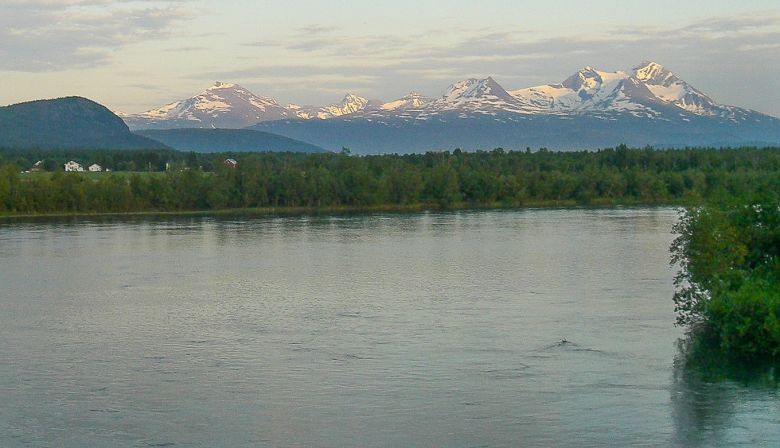
Tor-Erland Nilsen of the Alta River Association writes:
“This Covid 19 situation has also influenced us. Most of the rods has been sold. Most of them has been sold to Norwegian anglers, but also to anglers from other countries after the border has been more and more opened.For us has it been an important issue that we want to have so many as possible of our employees in work during the summer.Our economic this year will not be as it should be, but under this circumstances will we be satisfied with this Covid-19 year.”
About angling he notes:
The total catches has so far been under normal.
The catches over 18 kg is as normal.
The catches for those between 10-13 kg (3 sea winter) has been under normal.
The catches of grilse (1 sea winter) has been very good, and in very good condition.
The biggest so far is a female on 22 kg.
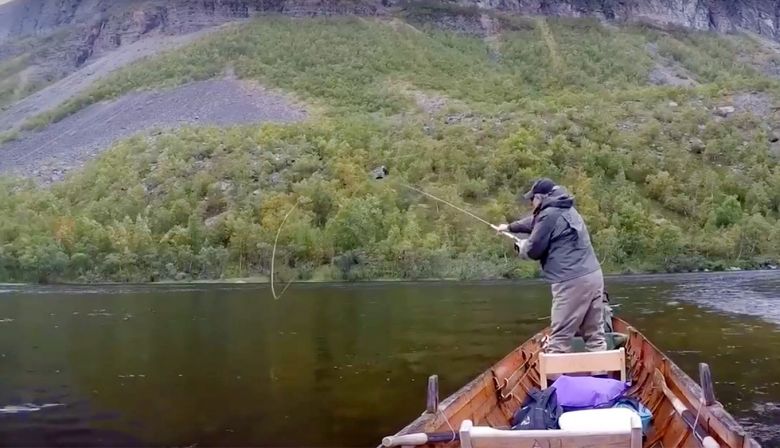

From analyzing Icelandic catch reports, returns to the country appear to be improved over 2019.
The Federation of Iceland Salmon River Owners keeps an up to date tally on the situation there and you can visit their website at http://www.angling.is/en/catch-statistics/
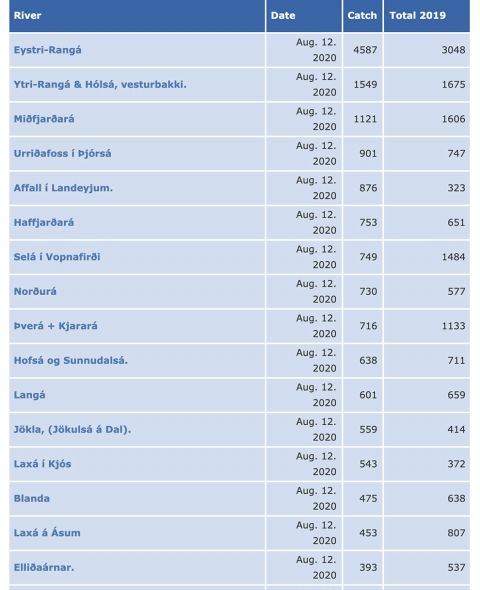
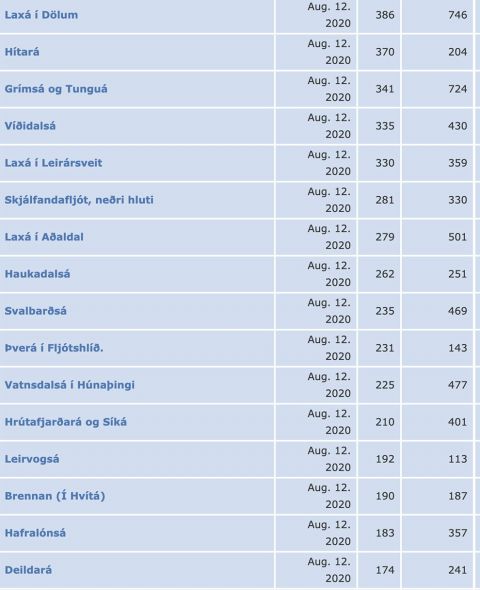
Every Icelandic river is different. The Norðurá for example, located about 65 km. north of the capital Reykjavik, has 55 km. of salmon accessible shore. Generally there are 15 rods allowed, and so far it has had 705 salmon angled, well above last year’s total catch of 577.


“Sad fishing year altogether.
“We haven’t run the season this year. We had hopes things would get better but borders are closed and very few International flights at the time.
“Scientists will be back in camp next week and after that we will get the numbers and feedback for 2020.
“We only had a few fisherman in the Spring and numbers were excellent with great hopes our fall return will be strong too, fingers crossed.”
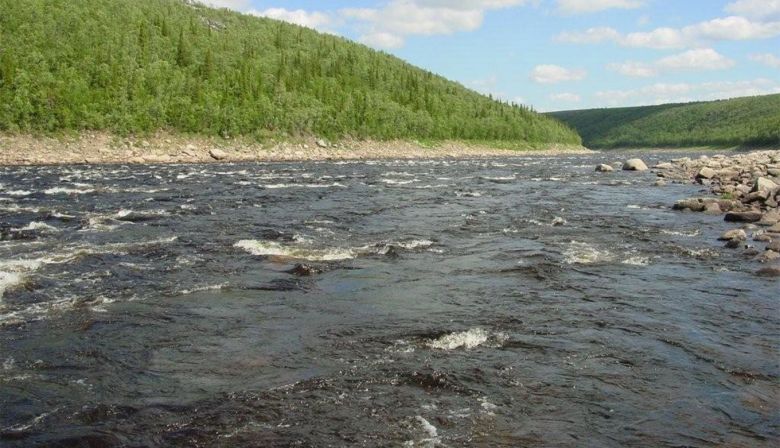
Reports from Scotland indicate an improved season of returns, but with fewer anglers on the water as a result of travel restrictions.
ASF’s Bill Taylor heard from some who had fished the Spey and said it was the best they had seen in years. Not only that, but the fish are healthy, powerful and perhaps a little larger overall.
Other reports are saying there is presently a good grilse run in the Spey.
On the Dee River, July angler success was DOUBLE the five-year average.
The Tweed in July was doing nearly TRIPLE the five-year average. More good news there.
Weather is finally helping the salmon, although not necessarily people. There have been torrential rains in Scotland, helping to cool the warm waters. Unfortunately it has also resulted in landslips, and the derailing of a train travelling on the Aberdeen to Dundee route.
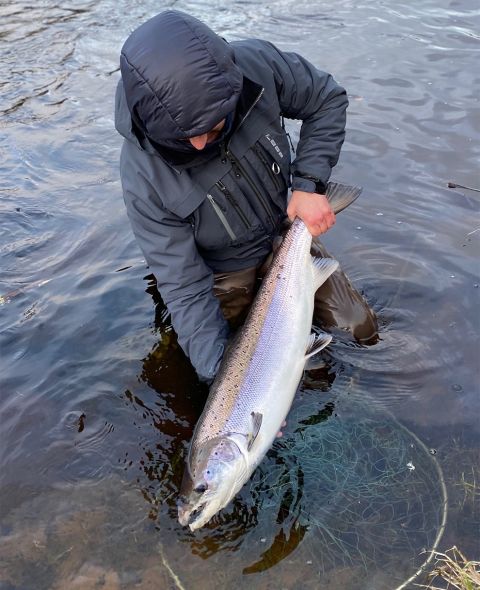
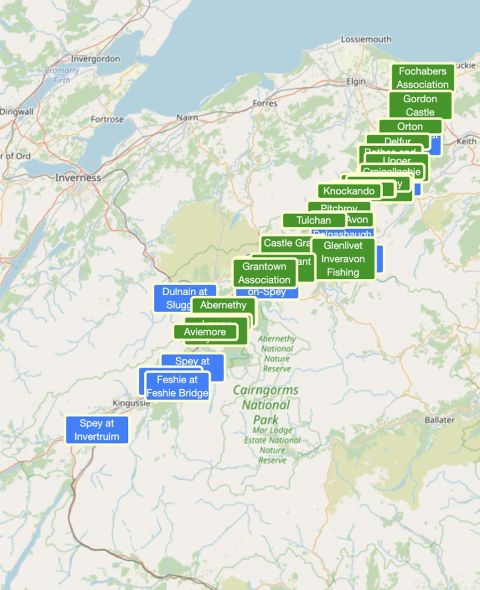
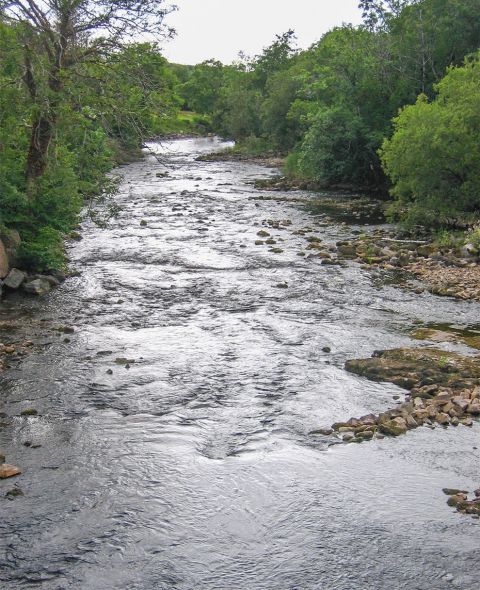
Ken Whalen, research director with the Atlantic Salmon Trust writes:
“Here in Ireland, Covid restrictions resulted in little if any fishing for our larger spring salmon. Following typical “summer” weather throughout the Covid restrictions period (mid-March to mid- June), we’ve since enjoyed cool, wet conditions with a perfect sequence of small to medium floods.
“Grilse fishing in rivers along the south west / west / north west coasts has , as a consequence, been excellent, with some beats reporting the best catches for 15 years. It will be interesting to see when the fish counter data are in how much of this is due to increased stock and how much can be assigned to perfect fishing conditions?
“Catches in the south and east coast rivers are far more patchy.
“The high water has meant that we’ve had only very limited reports of Red Skin disease. It seems to be a similar situation in Scotland.“
Francis O’Donnell, regional director for the Western Rivers Basin area was quoted in the Times of London:
“There is much excitement in western Ireland for what may be the best Atlantic salmon returns of the past dozen years. This year has bucked the trend, with reports of good numbers of fish in Scotland and Wales also. The size and good health of the fish is being remarked on by river managers.”
O’Donnell told The Times that wild salmon are fetching between €50 and €90 on the black market, with some sold to restaurants and to private homes.
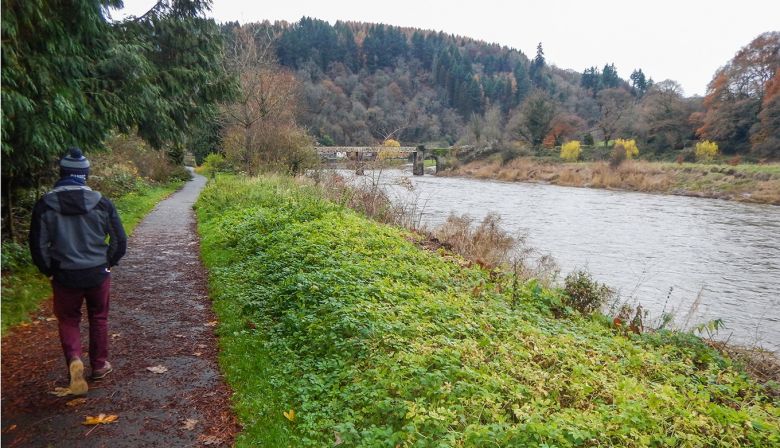
Tyne
The Tyne is an exceedingly important salmon watershed of great size. In normal years a count fence of great value is operated at Riding Mill, not far above Newcastle. But as with so many other important scientific field measures, figures are not available this year after 5 April.
Anecdotal information from fishermen says there have been good returns this year. There have been regular increases in water discharges from dams that have kept up the water levels.
Tyne River Management is asking people to send salmon scale samples. See Details

The Loire River has a large watershed and has been a major focus of restoration. But it has many dams, and there is strong resistance to removing impediments to migration.
In Brittany there are a large number of very short rivers. Less habitat, but also fewer issues for these rivers.
In the far south, the Adour, Nive, Nivelle and other rivers cascade down from the north side of the Pyrenees. The conservation-minded anglers are locked in a bitter dispute with net fishermen in the port of Bayonne, where the rivers meet the sea. The city of Bayonne appears to be on the netters side, and the French Government appears to totally ignore the issue.
In the northeast, on the Rhine, the French Power Generating Company appears to be doing everything possible to resist installing effective fish passage. Fish passage would be needed at five French dams would be needed to have good fish passage all the way to Basle.
Loire
The greatest numbers are counted at the fishway in Vichy, on the Allier Branch of the river.
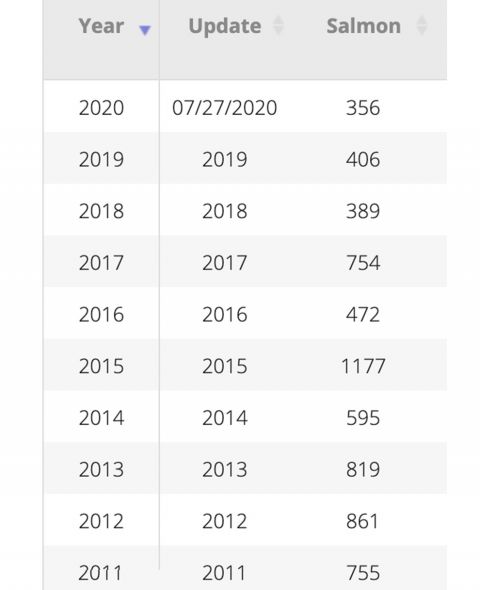

Some of these short rivers are exquisitely beautiful, and can be very good habitat for Atlantic salmon as well.
The three most productive in 2020 are:
682 in the Eleron River, counted at Karhoman. The best recent year was 1,368 salmon in 2010
432 in the Aulne River, counted at Chateaulin. Maximum was 1,291 in 2016
224 in the Princes River at Moulin des Princes. Best recent return was 855 in 2017.
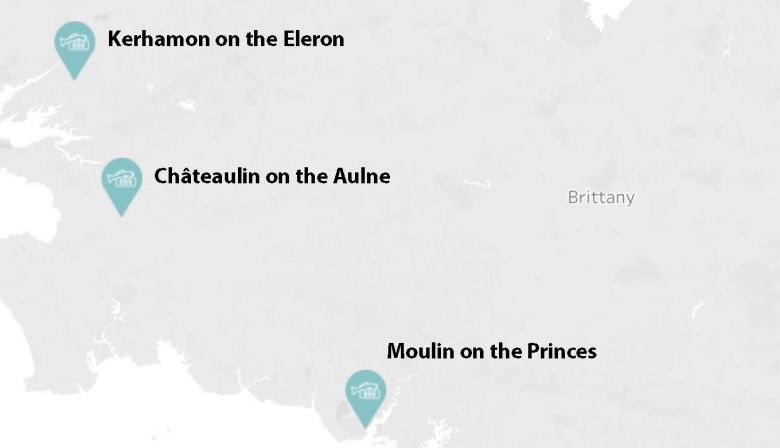
Adour
Pliny the Elder, who died in the 79 AD eruption of Mt. Vesuvius, wrote that the people of Aquitania, the region of the Adour, prized salmon above all other fish. Indeed they are still fighting over it, with netters at Bayonne at legal odds with the many conservationists of salmon in the region.
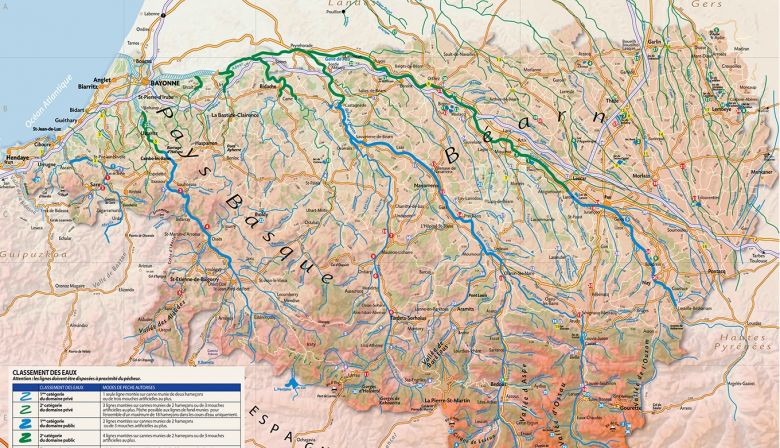
In Asturias there is a total for the fish caught, 856, slightly greater than 809 in 2019. In Spring season it appears that angling was generally allowed in Asturias, and later in Galicia. The angling season ended July 15, 2020.
For historic purposes, the table below gives the full river numbers for rivers in Asturias
Galicia
The Minho holds a special place in the heart of Atlantic salmon conservationists as it is the most southerly salmon river in Europe, and is the northern border of Portugal.
In 2020 there were just 8 Atlantic salmon caught in the Minho.
The Ulla is another traditionally important river in Galicia, and in 2020 there were 15 Atlantic salmon caught in this river.
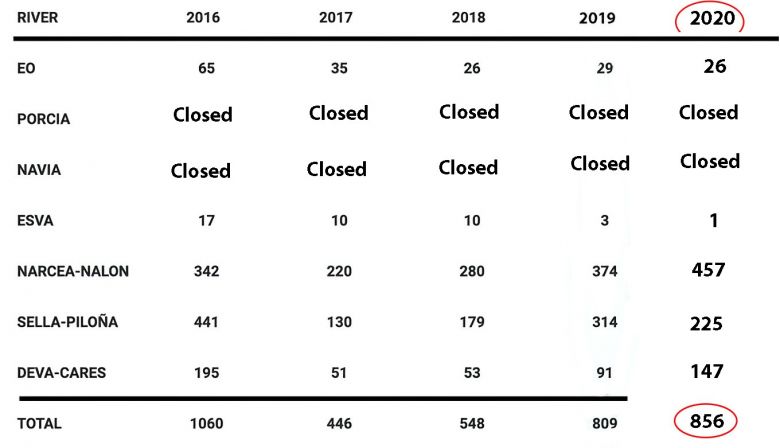
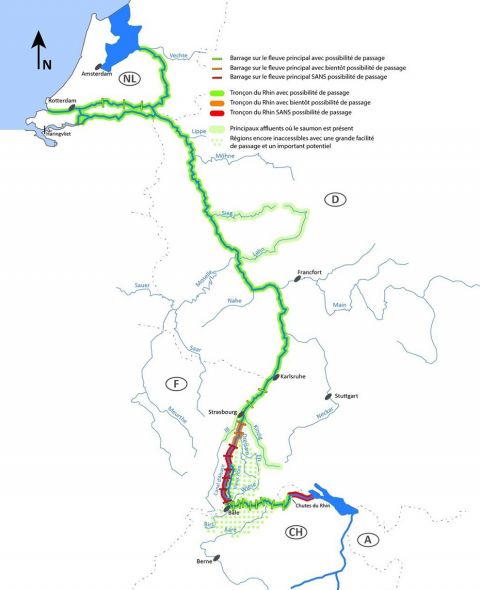
For 3 decades there has been a determined plan to have effective fish passage in the Rhine from the sea as far as Basle, Switzerland. The goal was to be 2020 for completion. Alas there is a long way to go yet.
With multi-millions of Euros spent, there is good fish passage now as far as Strasbourg. But from there to Basle there are five French-owned power plants that have shown little interest in solving fish passage issues. Once salmon reach Basle, there is good fish passage most of the way to Lake Constanz.
In 2020 a total of 185 Atlantic salmon have passed through the Iffezheim fishway. That is much better than the 59 in 2019, or 96 in 2018.
Now it is noted the water temperatures are high, as they have been in watersheds across Western Europe.
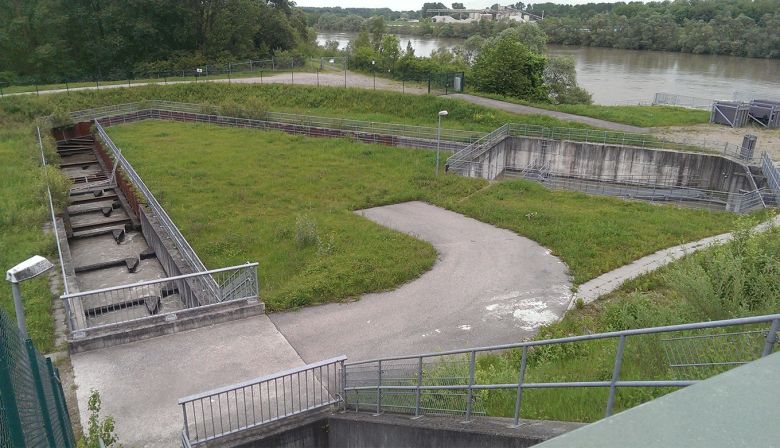
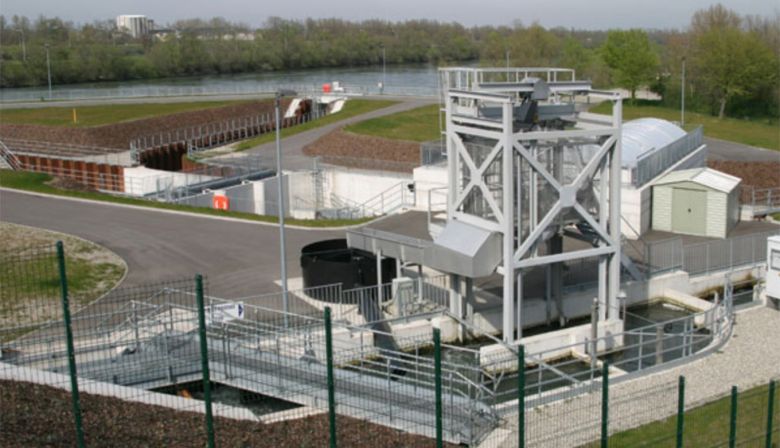
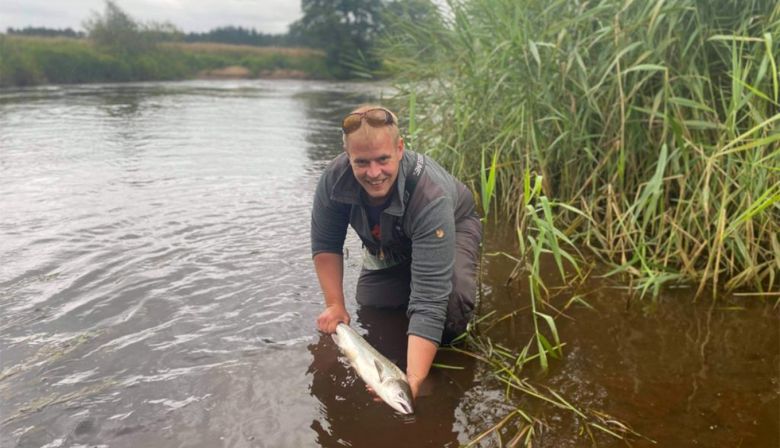
The catches this year on this marvellous Skjerne Å River in Jutland are perhaps a bit behind last year. So far 870 salmon have been brought in, of which 590 were released, a 68 per cent rate.
For all of 2019 the total in this river was 1,720, with 1,390 released, or a 81 per cent release rate.
The average length in 2020 is 87 cm. somewhat larger than the 2019 average of 83 cm.
Incidentally, the Danish sportfishing record is a magnificent bright salmon weighing 26.5 kilos ( 60 lb) caught in the River Skjern in 1956.
This river is overall healthier, but with concerns about pesticides in groundwater, and has improving numbers of Atlantic salmon through the years. It is bouncing back nicely from a series of land reclamation projects that only ended in the 1960s.
Red Skin Disease
In Denmark, as well as southern Norway and in Scotland, there is grave concern about red skin disease.
Salmon with red skin disease have a characteristic red rash on the abdomen and may appear debilitated and lethargic. The rash may be localized to a smaller area, but may also run along the entire abdomen.
The disease can develop so that major changes are seen in the skin such as wounds and bleeding along the abdomen that can spread to the head and tail. Sometimes there is a fungal infection on top, which further weakens the fish and eventually kills the fish.
There is still comparatively little known about the disease, and an increasing worry about its spread, which appears to be at sea.
It is not very widespread, but there is concern.
Most countries are asking that instances of the disease be reported, and are getting out information on it.
For Ireland For Denmark For Norway (use Google translate)
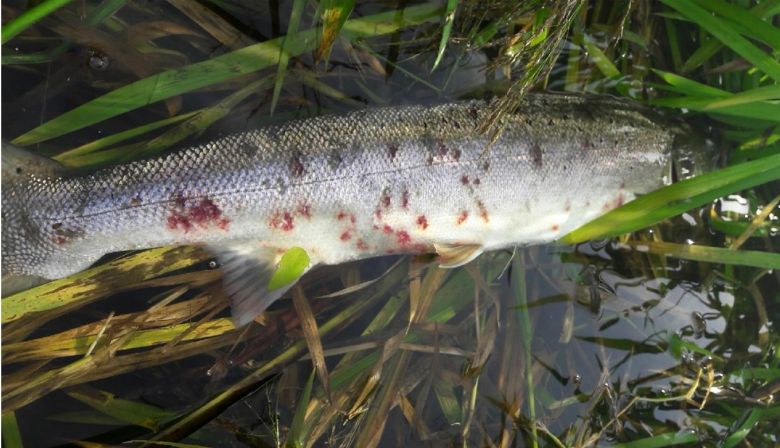
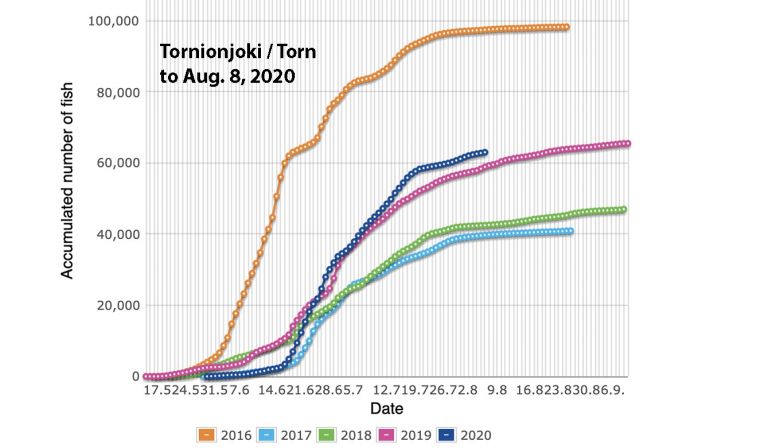
So far, 2020 is another good year, with about 63,000 Atlantic salmon passing through the counting facility. This is the second best year of the last 10 As the graph shows, the best year was 2016 when almost 100,000 returned.
This year the best single day was in mid-June, when about 3,300 were counted.

So far, 3,563 large salmon have returned. As with the Tornionjoki, this is the second best year of the last 10. The best was 5,125 by the end of the year.

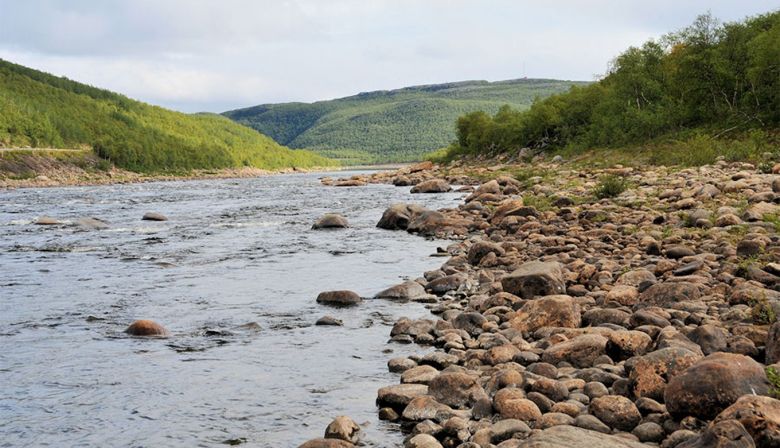
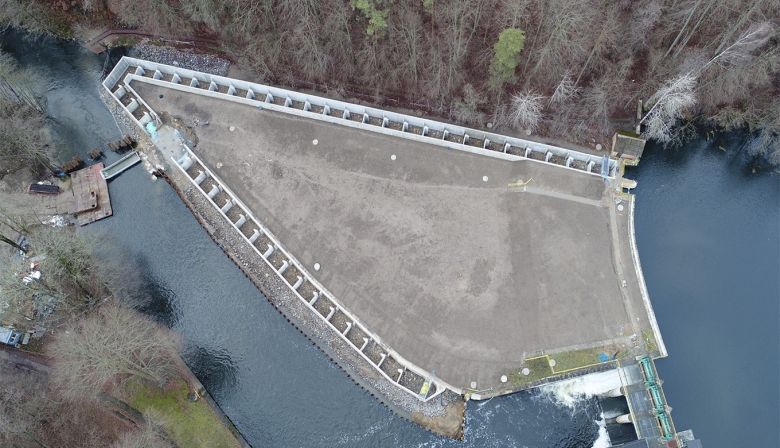
At great cost, an entirely new fishway was completed in late autumn at the Kamienna Dam.
Artur Furdyna of Przewodniczący TPRIIG says:
Last year we had 33 spawners going up through the fishway and 25 returned downstream after spawning.
Length of the spawners was from 65 cm to 144 cm.
This may be a small number, but there is hope they will be the basis of increases in the years ahead, as it is hoped they are a largely pure DNA population for the River Drawa.
Artur Furdyna continues,
We counted some redds in the late autumn, but part of the spawning bed area lies in a military reserve where access is difficult often.
This spring, for the first time we captured smolt heading down and out to sea.

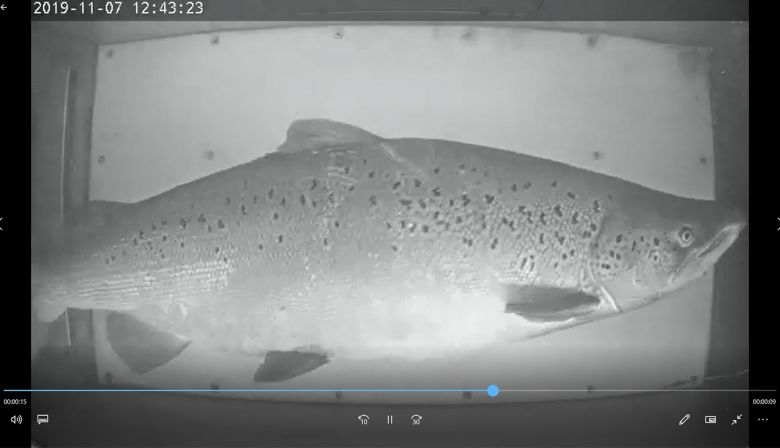
A major working fishway that provides access to important spawning habitat makes this river open above Kamienna for the first time in 116 years.
The Drawa River salmon are the last original Atlantic salmon population in Poland, and now they have a chance at a future.
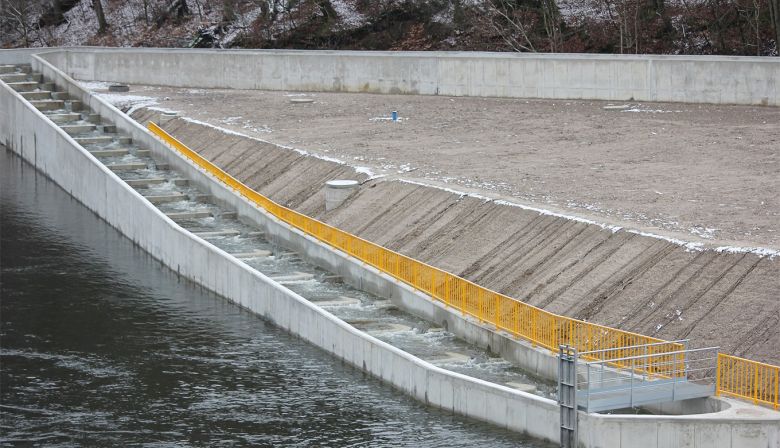
Covid-19 pandemic has certainly altered the angling schedule this year, with the earlier months finding many rivers across Europe with no anglers, or reduced fishing pressure. Hopefully this will be good for the Atlantic salmon in the long run.
It is wonderful to see better numbers in the Rhine fish ladders, and to see Poland making a serious effort to sustain a small but original population of Atlantic salmon on the Drawa River.
It remains troubling to see the still uncommon but apparently widespread Red Skin Disease, and hopefully it will not became a hug e problems.
A final point.
It is perhaps sad that the European salmon river in 2020 with no statistics on line is the Pechora. The Pechora is a truly massive watershed of many dozens of significant tributaries that flow down from the Ural Mountains, in a sub-arctic version of the Amazon.
These Pechora Atlantic salmon have the longest migration to ocean feeding grounds of any run.
